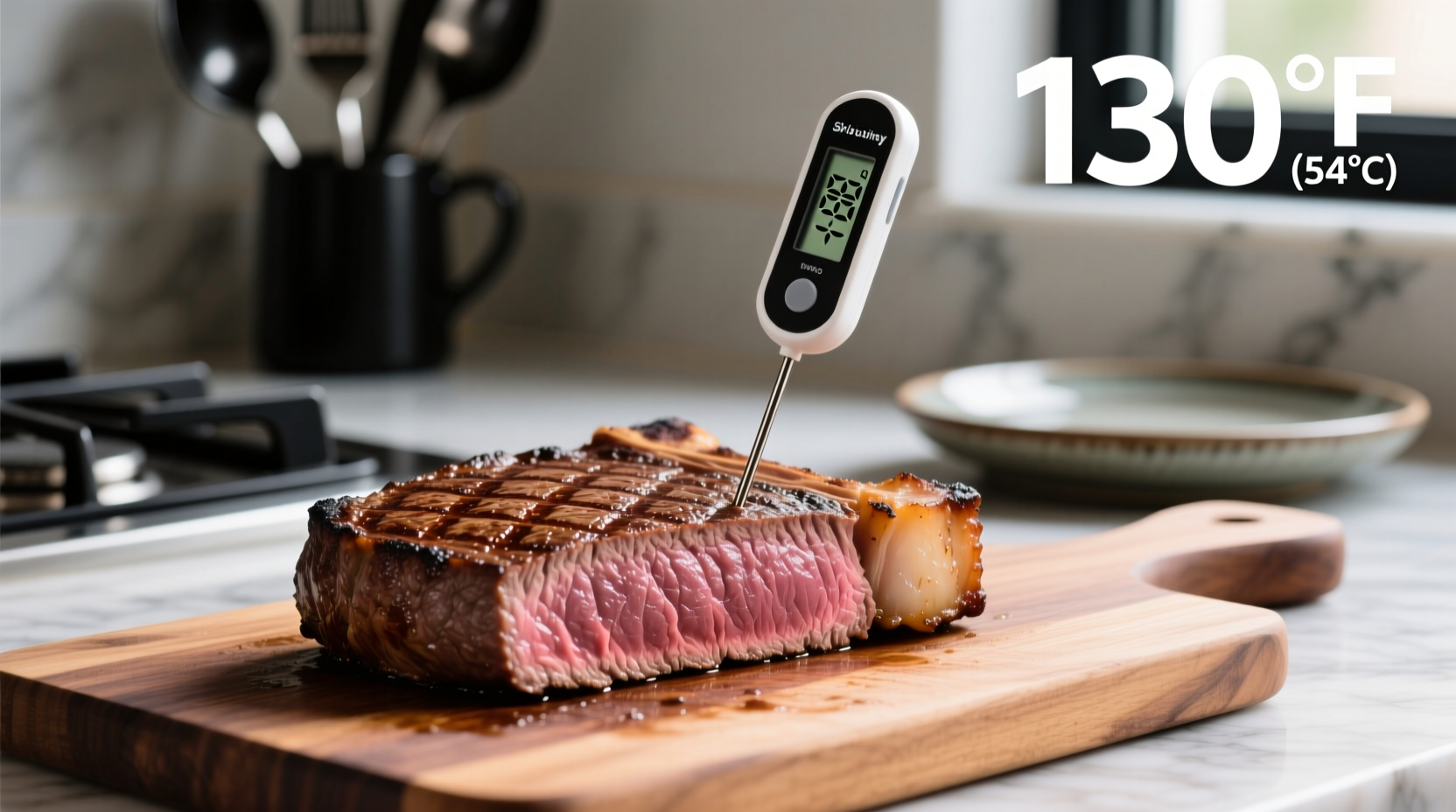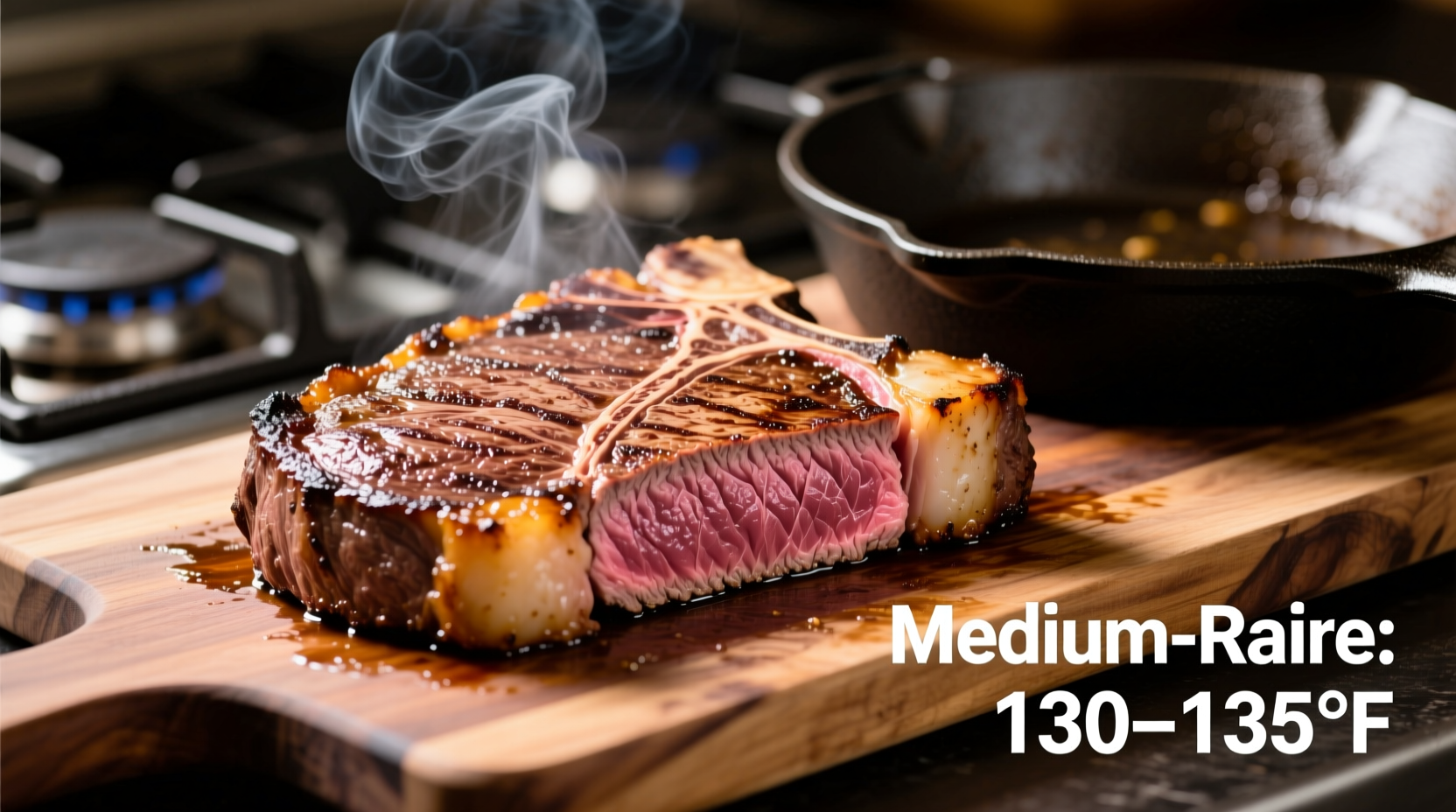The Science Behind Perfectly Cooked Sirloin
Understanding sirloin cooking times requires knowing how heat transfers through meat. Sirloin's relatively lean composition means it cooks faster than fattier cuts but is more prone to drying out if overcooked. The USDA recommends a minimum safe internal temperature of 145°F for beef, followed by a 3-minute rest period. However, most chefs prefer cooking sirloin to medium-rare (130-135°F) for optimal tenderness and flavor.
| Steak Thickness | Rare (120-130°F) | Medium-Rare (130-135°F) | Medium (135-145°F) |
|---|---|---|---|
| 1 inch | 2-3 min/side | 3-4 min/side | 4-5 min/side |
| 1.5 inches | 3-4 min/side | 4-5 min/side | 5-6 min/side |
| 2 inches | 4-5 min/side | 5-6 min/side | 6-7 min/side |
Note: These times apply to pan-searing or grilling over direct high heat (400-450°F). Always preheat your cooking surface and allow steak to reach room temperature before cooking.
Why Timing Alone Isn't Enough: The Critical Variables
Many home cooks make the mistake of relying solely on cooking time, but five factors dramatically affect how long to cook sirloin:
- Starting temperature - A steak straight from the refrigerator takes 30-40% longer to cook than one at room temperature
- Thickness variation - Sirloin steaks often taper from thick to thin ends, requiring adjusted cooking
- Cooking surface temperature - A properly preheated cast iron skillet (500°F+) creates better searing than a medium-heat pan
- Ambient conditions - Outdoor grilling on a cold day requires longer cooking than indoors
- Carryover cooking - Internal temperature rises 5-10°F during resting

Step-by-Step Cooking Method Comparison
While timing provides a baseline, your cooking method significantly impacts results. Here's how to adjust for different techniques:
Pan-Searing (Best for 1-1.5 inch steaks)
- Preheat heavy skillet 5 minutes until smoking slightly
- Sear undisturbed 3-4 minutes until deep brown crust forms
- Flip and cook additional 3-4 minutes for medium-rare
- Add 30 seconds per side if finishing in 400°F oven for thicker cuts
Grilling (Direct Heat Method)
- Preheat grill to high (450-500°F) with clean, oiled grates
- Cook 4-5 minutes per side for 1-inch steak at medium-rare
- Rotate 90 degrees halfway through each side for cross-hatch marks
- Move to cooler side of grill if flare-ups occur
Oven-Roasting (Best for 1.5+ inch steaks)
- Sear on stove first (2-3 min per side)
- Transfer to 400°F oven: 5-7 minutes for medium-rare
- Check temperature 5 minutes before expected finish time
- Remove when 5°F below target temperature
Avoid These Common Sirloin Cooking Mistakes
Based on analysis of cooking forums and culinary school data, these timing errors cause the most ruined steaks:
- Mistake: Flipping too frequently
Solution: Allow proper sear formation (3+ minutes) before first flip - Mistake: Not accounting for carryover cooking
Solution: Remove steak from heat when 5°F below target temperature - Mistake: Using cold steak straight from refrigerator
Solution: Pat dry and rest at room temperature 45-60 minutes before cooking - Mistake: Cutting immediately after cooking
Solution: Rest 5-7 minutes (1 minute per 1/2 inch thickness) to redistribute juices
Temperature Timeline: What Happens During Cooking
Understanding the internal temperature progression helps prevent overcooking. When cooking a 1.25-inch sirloin steak from room temperature (65°F) on a 450°F surface:
- 0-3 minutes: Surface sears while interior remains cool (under 100°F)
- 3-5 minutes: Heat penetrates to center (100-120°F - rare zone)
- 5-7 minutes: Center reaches medium-rare (125-130°F)
- 7-9 minutes: Center approaches medium (135-140°F)
- After removal: Temperature climbs 5-10°F during 5-minute rest
This timeline from the American Meat Science Association explains why timing alone fails—steaks of identical thickness can have different starting temperatures, affecting this progression.
Context Matters: When Standard Timing Guidelines Don't Apply
These cooking time recommendations assume standard conditions. Adjust when:
- Using frozen steak: Add 50% more time and expect less even cooking
- Cooking at high altitude: Boiling point decreases, requiring longer cooking times
- Thin-cut sirloin (under 3/4 inch): Cook 1.5-2 minutes per side max
- Well-marbled steak: Fat content slows heat transfer slightly
The USDA Food Safety and Inspection Service emphasizes that visual cues alone aren't reliable for determining doneness—always verify with an instant-read thermometer.
Pro Tips for Perfect Sirloin Every Time
Professional chefs use these techniques to achieve consistent results:
- Salting strategy: Salt 45 minutes before cooking to enhance moisture retention
- Thermometer placement: Insert horizontally into thickest part, avoiding bone or fat
- Resting technique: Tent loosely with foil on warm plate (not sealed tight)
- Doneness check: Press test: rare feels like cheek, medium-rare like chin, medium like forehead
FAQ: Sirloin Cooking Time Questions Answered
- How long to cook sirloin steak in oven at 350 degrees?
- What's the ideal cooking time for medium sirloin steak?
- How does sirloin cooking time differ from ribeye?
- Can I cook frozen sirloin without thawing first?
- Why does my sirloin always turn out tough despite following timing guides?











 浙公网安备
33010002000092号
浙公网安备
33010002000092号 浙B2-20120091-4
浙B2-20120091-4